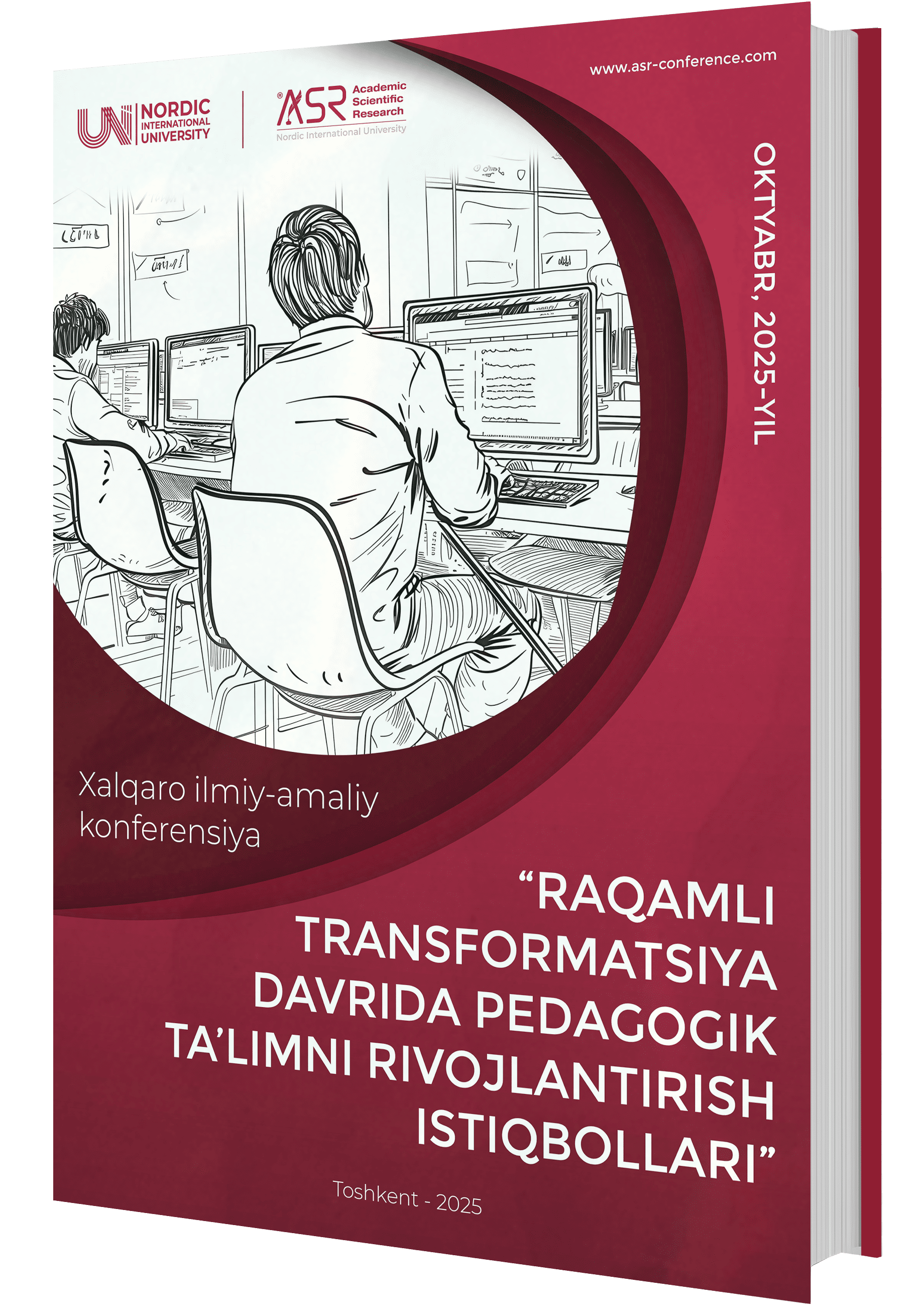PREPARING STUDENTS FOR STEM PRODUCT DEVELOPMENT: AUTOMATED WATERING SYSTEM
Аннотация
In this project, an automated water dispenser system was designed and tested using the Arduino platform and modern sensor technologies. The research addresses the growing relevance of automation in everyday life, particularly in managing water usage efficiently while reducing human labor and energy consumption. The system automatically detects the presence of a cup, pours water, monitors the reservoir level, and provides an audio alert when full. Using engineering modeling, prototyping, and experimental testing, students created a working prototype and optimized the control algorithm for accuracy and energy efficiency. The results demonstrated that the device significantly improves safety, time management, and resource conservation. Thus, the project not only enhances the quality of STEM education but also fosters students’ creativity, collaboration, and problem-solving skills through real-world engineering applications.
Библиографические ссылки
Nicolae, A., Korodi, A., & Silea, I. (2021). Complete automation of an energy consumption reduction strategy from a water treatment and distribution facility, inside an industrial Internet of Things-compliant proactive historian application. Sensors, 21(7), 2569. https://doi.org/10.3390/s21072569
Nagasa, M. M., & Johnson, P. (2025). Industrial Internet of Things for a wirelessly controlled water distribution network. Sensors, 25(8), 2348. https://doi.org/10.3390/s25082348
Fritz, R. T., Gimenes, J. de C., & Filho, A. C. de P. (2020). Um estudo da automação para redução de perdas na rede de distribuição de água. Brazilian Journal of Development, 6(8), 56408. https://doi.org/10.34117/bjdv6n8-161
Ramos, H. M., Kuriqi, A., Besharat, M., Creaco, E., Tasca, E., Coronado-Hernández, Ó. E., Pienika, R., & Iglesias‐Rey, P. L. (2023). Smart water grids and digital twin for the management of system efficiency in water distribution networks. Water, 15(6), 1129. https://doi.org/10.3390/w15061129
Raja Sekhar, G. G., Kalyan, D., Ramkumar, R., & Lakshmi, M. (2023). Automated water dispenser – A hygiene solution for pandemic. In IoT and analytics in renewable energy systems (Volume 2): AI, ML and IoT deployment in sustainable smart cities (pp. 289–298). CRC Press. https://doi.org/10.1201/9781003374121-24
Nayak, M., Manjunath, H. N., & Madhusudhan, M. (2020). Performance studies on automated solar powered air cooler/air heater. International Journal of Scientific and Technology Research, 9(1), 3480–3483.
Nithiyananthan, K. (2017). Design and development of automated solar panel cleaner and cooler. International Journal of Electrical Engineers, 9(2), 186–197.
Tanwar, A., Lal, S., Kaur, R., Padmanathan, N., Dalton, E., & Razeeb, K. M. (2023). A fully automated measurement system for the characterization of micro thermoelectric devices. Applied Thermal Engineering, 224, 120111. https://doi.org/10.1016/j.applthermaleng.2023.120111
Vara Martinez, J. A. de la, Garcia Higuera, A., Roman Esteban, M., Romero Asensio, J., Carmona Delgado, M., Berruga, I., & Molina, A. (2018). Monitoring bulk milk quality by an integral traceability system of milk. Journal of Applied Animal Research, 46(1), 784–790.
Tanwar, A., Lal, S., Kaur, R., Padmanathan, N., Dalton, E., & Razeeb, K. M. (2023). A fully automated measurement system for the characterization of micro thermoelectric devices near room temperature. Applied Thermal Engineering, 224, 120111. https://doi.org/10.1016/j.applthermaleng.2023.120111
Nithiyananthan, K. (2017). Design and development of automated solar panel cleaner and cooler. International Journal of Electrical Engineers, 9(2), 186–197.
Загрузки
Опубликован
Выпуск
Раздел
Лицензия
Copyright (c) 2025 A. Pattayev , Sh. Ramankulov, Zh. Kanayeva , N. Ikrambek, I. Abdurashitov, K. Kelesbaev

Это произведение доступно по лицензии Creative Commons «Attribution-NonCommercial» («Атрибуция — Некоммерческое использование») 4.0 Всемирная.
Условия лицензии
Эта работа доступна под лицензией Creative Commons Attribution-NonCommercial 4.0 International License. Чтобы просмотреть копию этой лицензии, посетите http://creativecommons.org/licenses/by-nc/4.0/ или отправьте письмо по адресу Creative Commons, PO Box 1866, Mountain View, CA 94042, США.
По этой лицензии вы можете:
Поделиться — копируйте и распространяйте материал на любом носителе и в любом формате.
Адаптируйте — делайте ремиксы, трансформируйте и дорабатывайте материал.
Лицензиар не может отозвать эти свободы, если вы соблюдаете условия лицензии. На следующих условиях:
Атрибуция. Вы должны указать соответствующую ссылку, предоставить ссылку на лицензию и указать, были ли внесены изменения. Вы можете сделать это любым разумным способом, но не таким образом, который бы предполагал, что лицензиар одобряет вас или ваше использование.
Некоммерческое использование — вы не имеете права использовать материал в коммерческих целях.
Никаких дополнительных ограничений. Вы не имеете права применять юридические условия или технологические меры, которые юридически запрещают другим делать все, что разрешено лицензией.





